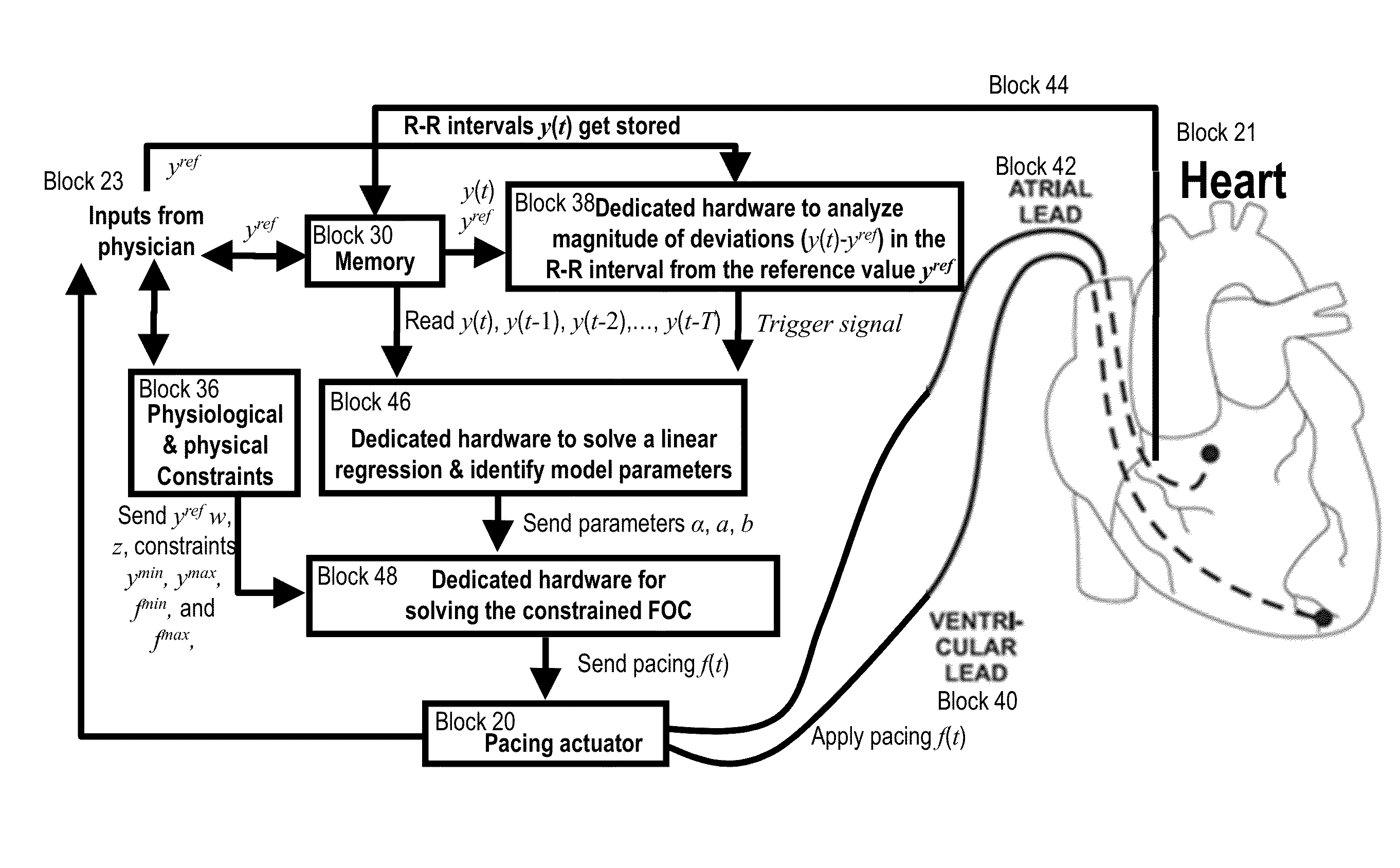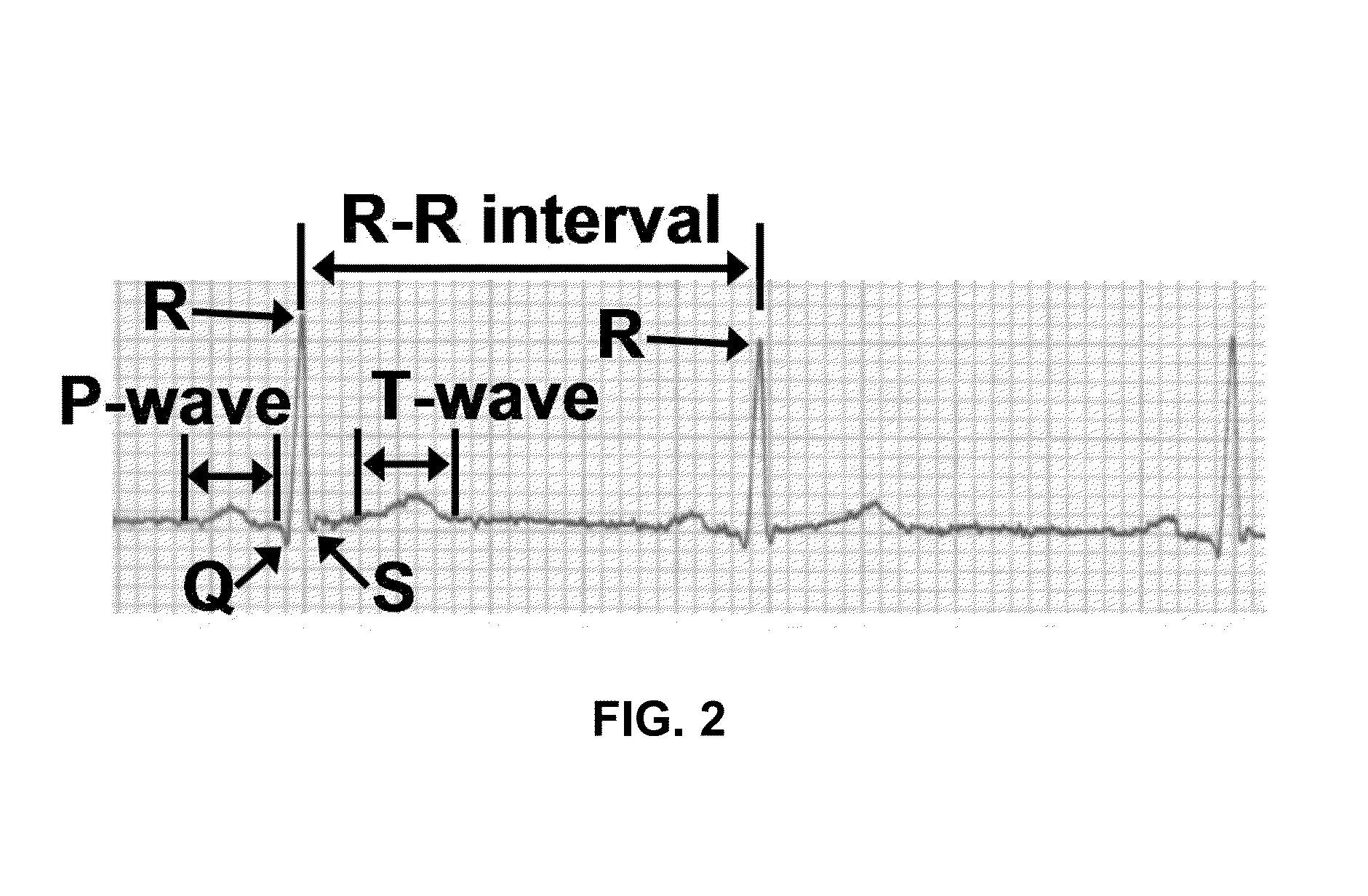Implantable Pacemakers Control and Optimization via Fractional Calculus Approaches
a technology of fractional calculus and pacemaker, applied in the field of medical devices, can solve the problems of not providing the necessary amount of oxygenated blood throughout the body, introducing extra pacing to an already active heart, and a very important and challenging control algorithm design task
- Summary
- Abstract
- Description
- Claims
- Application Information
AI Technical Summary
Benefits of technology
Problems solved by technology
Method used
Image
Examples
Embodiment Construction
[0020]The present invention describes a method for determining and controlling physiological behavior, such as heart rate abnormalities, by using a fractal optimal control approach. The example described herein is for a pacemaker application to control heart rate abnormalities. However, the invention is not to be limited to a pacemaker application.
[0021]Basics of Fractional Calculus
[0022]The origins of fractional calculus date back to the correspondence between L′Hopital and Leibniz in which they debated the meaning of a 0.5 order differentiation. Over the years, fractional calculus has found applications in physics (e.g., viscoelasticity, dielectric polarization, heat transfer phenomena) and engineering (e.g., control bioengineering, traffic modeling, game theory).
[0023]Broadly speaking, fractional (or fractal) calculus deals with functional differentiation and integration of arbitrary orders. Unlike classical (i.e., integer order) calculus, fractional derivatives directly incorpor...
PUM
 Login to View More
Login to View More Abstract
Description
Claims
Application Information
 Login to View More
Login to View More - R&D
- Intellectual Property
- Life Sciences
- Materials
- Tech Scout
- Unparalleled Data Quality
- Higher Quality Content
- 60% Fewer Hallucinations
Browse by: Latest US Patents, China's latest patents, Technical Efficacy Thesaurus, Application Domain, Technology Topic, Popular Technical Reports.
© 2025 PatSnap. All rights reserved.Legal|Privacy policy|Modern Slavery Act Transparency Statement|Sitemap|About US| Contact US: help@patsnap.com



